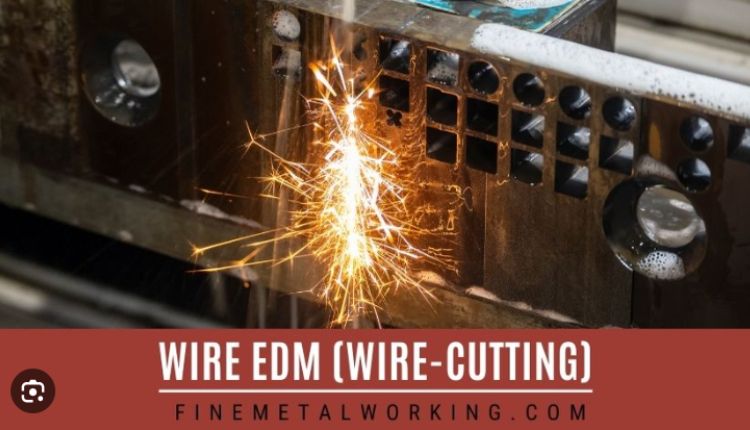The ability to make precise, accurate shapes makes edm parts indispensable for industries like automotive and medical. It can also cut narrow slots and small holes for use in machines. EDM works by using a tool electrode and the workpiece to cut away material through electrical discharge. This process takes place in a tank of dielectric fluid.
Table of Contents
Wire EDM
It can create incredibly precise and detailed edm parts that would be impossible to manufacture by other methods. It can cut through even the hardest and most brittle materials without deforming or distortioning them, producing extremely high feature accuracies and extreme surface finishes. It doesn’t require mechanical force, which eliminates vibration and internal stresses that can damage a part and impact its tolerances.
The process begins with a thin electrically charged wire, usually made of brass and sometimes coated in zinc to help it cut more quickly. The wire is held in place by upper and lower guides while a series of electrical discharges are generated between it and the workpiece to cut the desired shape. Each spark melts or vaporizes microscopic pieces of both the workpiece and the wire, which are removed from the piece in a controlled sequence as they occur. The debris is flushed away and filtered out of the dielectric fluid that’s circulated, cooled, and deionized during the cutting cycle.
Sinker EDM
Unlike wire EDM, the electrode (the cutting tool) in sinker EDM is not a continuous wire, but rather a solid shape. This allows the machine to cut through materials like copper without distorting the walls of the part or creating any residual stress. It is ideal for parts that need to be shaped, such as cross-sections, thin walls, or blind cavities and keyways. The process uses a high-voltage spark to break down the workpiece and melt away the material closest to the electrode. The machine is then able to cut the shapes and sizes of a part with extreme precision.
A common application for sinker EDM is producing gears. This enables manufacturers to produce complex gears with tight tolerances, a short production cycle, and precision features that would be difficult or impossible to do using other machining processes. The ability to create accurate parts at a fast pace is also beneficial for decreasing lead times and increasing manufacturing productivity.
Hole Drilling EDM
What started as EDM hole-popper technology has now evolved to high-speed precision hole drilling systems that can drill smaller, more accurate holes and provide better surface finish with less operator intervention. The key, says GF AgieCharmilles product manager Ken Baeszler, is that today’s EDM drilling machines use state-of-the-art digital generators adapted from the sinker side of the family to offer greater speed and consistency.
The energized rotating tube electrode is plunged into the work piece to be drilled, and as it approaches the material, enough electric charge builds up between the tool and the workpiece to jump through the dielectric fluid and create a spark. The resulting erosion cuts away the workpiece material to produce the finished hole. These newer machines can also reduce cycle times by incorporating break-through detection that alerts operators when the electrode begins to touch the back of the workpiece. This can eliminate back wall strikes that can damage the part or require costly repairs or scrap.
Micro EDM
The micro edm parts process is able to machine 2 1/2-dimensional features into parts that can be assembled together. Typical uses include creating molds and dies for micro injection molding and micro stamping processes that manufacture small mechanical and electrical components such as gears and springs. In the micro-EDM process (also known as wire burning or spark EDM), a thin, heated wire is used to craft a desired shape from the workpiece by spark erosion. Unlike the traditional die-sinking EDM process, in which the tool represents a geometric negative of the desired mold cavity, the tool in the micro-EDM process is an extremely thin rotating rod that erodes the workpiece to form a contoured surface.
During the micro-EDM process, the gap between the workpiece and the tool is closed by a dielectric fluid to prevent premature sparking and conduct electricity between the electrode and the workpiece. A servo control system monitors the gap voltage and moves the machine ram up or down to maintain a gap voltage that is close to a predetermined value.
Conclusion
Electrical discharge machining (EDM) works on electrically conductive materials, opening up new manufacturing opportunities for parts that would be impossible with traditional tools. It can cut complex shapes, even in materials that are too hard for conventional machining.
